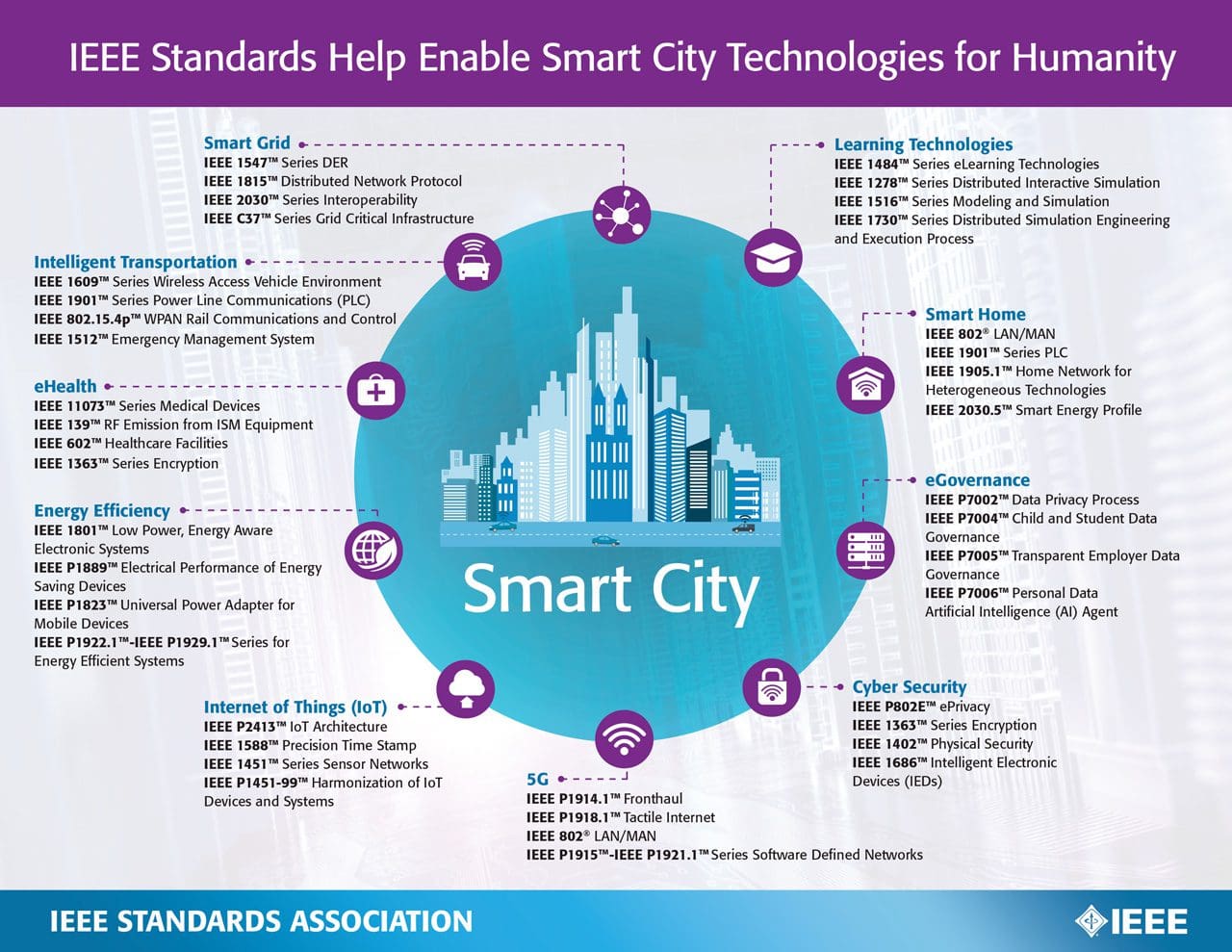Making things “smart” seems to be happening everywhere today. More and more people are using smart tools in their homes, cars and other aspects of their everyday lives. New applications continue to incorporate more and more smart elements, while smart technologies are integrated into new and updated infrastructure as well. Smart city technologies are working today to address challenges in transportation, housing, health and well-being, water and energy supplies, as well as the challenges of pollution and resilience. There is a massive investment being made in infrastructure requirements—almost USD $10 trillion is expected to be invested in smart city technologies by the year 2025. So it’s quite appropriate that for this year’s World Standards Day, the focus is on how “standards make cities smarter.”
In fact, it’s almost impossible to have any smart technologies without standards. And IEEE is at the heart of smart development through its existing and evolving standards activities. Almost all smart technologies rely on the IEEE 802® suite of wired and wireless communication networking technologies. In addition, the IEEE 1547™ family of standards and IEEE 2030.5™ are key to leveraging smart technologies for the interconnection of distributed energy resources worldwide, thus allowing smart technologies and renewable energies being developed today to be integrated. Ubiquitous green community control networks, which help create the remote-control architecture needed for digital communities, intelligent building groups, and digital metropolitan networks, are standardized by the IEEE 1888™ series of standards.
And the IEEE 2030™ family of standards are vital to creating smart grid interoperability, which is vital for not only creating a smart city, but also for interconnecting the many smart cities arising worldwide. IEEE has assisted in the evolution of several core smart cities through its IEEE Smart Cities Initiative, which recognizes and helps cities that are establishing and investing both human and financial capital into smart city plans. The core smart cities recognized by this initiative are Guadalajara, Mexico; Wuxi, China; Casablanca, Morocco; Kansas City, Missouri; and Trento, Italy.
Delivering broadband over power lines is standardized by IEEE 1901™ and its related standards. The IEEE 1815™ series of standards addresses electric power systems communications, while IEEE 1909™ standardizes recommended practices for the testing and implementation of smart grid communication equipment. And the IEEE 1609™ family of standards define an architecture and a complementary, standardized set of services and interfaces that collectively enable secure vehicle-to-vehicle (V2V) and vehicle-to-infrastructure (V2I) wireless communications.
In addition, IEEE has started a new project, IEEE P2784™, to give municipalities and city integrators a tool and a reference model to understand and plan for the different technologies that exist for connecting sensor and devices, capturing and protecting data, while making their city smarter.
The IEEE Standards Association (IEEE SA) is also offering specific educational tools for smart cities. There are Massively Open Online Courses (MOOCs) on smart cities covering health, big data, and metrics. More information can be found at IEEE Smart Cities Courses. In addition, IEEE created the Blended Learning Program (BLP) on VLSI, which addresses skills gaps and enables future workforces with the technologies that are required for tomorrow’s technology environment. The BLP employs the latest in applied and immersive e-learning techniques combined with extensive hands-on practice to create an engaging online learning approach to large system integration.
So, IEEE standards and standards-related activities cover the gamut of technologies that relate to building and maintaining the smart city of the future, and its standards do indeed make cities smarter every day. For more information, visit the IEEE SA and IEEE Smart Grid websites.


